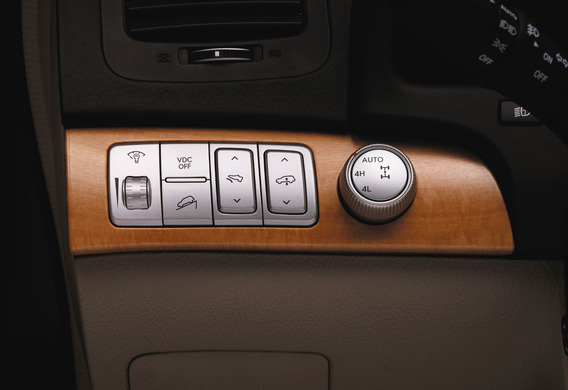
Full control type (s)
For a long time, motorists thought that a complete drive was needed only for off-road use. This continued until 1979-1980, while Audi did not develop and then unveil its Quattro system and a number of automobile brands did not offer a complete drive for passenger cars. Gradually, the buyer was accustomed to the idea that drive-wheel drive is not only an improvement of not only the vehicle's terrain, but also the manageability, as well as the more efficient use of the engine power.
Today, the range of four-wheel drive models presented in the market is extremely high. The full drive is also offered for SUVs (including SUVs and SUVs), sports cars and entertainment vehicles. Almost every automaker has its own system of full actuator (for example, the above-mentioned quattro at Audi, 4Matic at the Mercedes, the BMW, the XWD from Saab, etc.). However, despite the apparent diversity, all systems can be divided into three large groups: a permanent full drive, an automatic full drive, and a manual full drive.
Permanent complete actuator
The permanent full drive in the technical literature is also called full time. The name speaks for itself: in this system, all four wheels are continuously connected to the engine. At any given time, each wheel is the driving wheel, the machine has stable dynamic characteristics. For the separation of the torque between the front axle and the rear axle, the cross-axle (also known as the central) differential is used. Its initial function was to divide the torque among the axles equally, but today, thanks to the latest electronics, this ratio can change depending on the driving conditions. The complete transmission in which the torque is divided equally is referred to as symmetrical, and if the distribution is uneven, it is not symmetrical.
The permanent full drive with the differential is called "urban" because it is convenient for a homogeneous surface movement. But in off-road wheels can slip from which the car loses control (for example, on a slippery road when passing a turn a less loaded inner wheel may lose grip on the road).
To avoid this, interaxial differential lock is acquired. In the absence of a failure of traction, the system shall be operated in the normal operating mode and shall distribute the torque equally and the torque shall be redistributed to the full disconnection of one of the axles. In modern machines, interaxial differential locking works closely with electronic security systems.
Auto-connect full drive
In technical documentation, refers to AWD as well as part time. This scheme is considered to be the simplest and, at the same time, the most reliable type of complete drive. In normal mode, the vehicle has one axle (front or rear) and when a second axle is installed, the second axle becomes the 4x4 axle. The change of the road situation is followed by special electronics, automatic full-transmission connection takes place at the expense of the gearbox.
It would seem that this type of full-wheel drive is ideal: all four wheels become presentable only when necessary, and in the rest of the time the machine is no different from its mono-welded "brethren". However, the peculiarity of the AWD is that the transmission is not designed for the long-drive operation: under load, the details are heated and may even be inoperable. Some modern models have a special protective system that forces the full power drive to be turned off during overheating. In difficult road conditions such "care" may be a very unpleasant surprise for the driver.
Incidentally, taking advantage of the fact that not all motorists are dealing with the types of complete transmission, some car marketers issue AWD cars for permanent full drive. In the off-road, these machines do behave like fulltime SUVs, but in the city they are virtually no different from universals with front or rear actuators.
Manual Powered Drive
The CD TOD (torque on demand is translated from the English "torque on demand"), which is also known as the 4WD. The principle of its operation is much like AWD: on a level hard road surface, the car is the front or rear-wheel-drive, and when a situation occurs, it goes into a four-wheel-drive mode. The difference is that the decision to connect or disconnect the second axis is not automatic, but by the driver. A "light movement" of a motor vehicle becomes 4x4.
The 4WD is not the best option for new drivers, because they are not always able to react quickly to the emergency situation and to include the full drive in time. In addition, with the "force majeure" and once again on a level surface, many people simply forget to turn off the full drive, which leads to deterioration of controllability and, as in the case of AWD, to the rapid deterioration of the details of the transmission. On some models, special devices are installed today, or even a system of forcing one of the axles to be forcibly shut down.
When choosing a full drive, the motorist must first answer the question: "Under what conditions will the car be used predominantly?". If there is no extreme travel to the dacha, it is better to select the automatically-attached complete drive. For speed trips on the road a permanent full drive is suitable, but for off-road (for fishing, hunting, road tourism, or just vacation in nature) is a complete drive, connected by hand.









